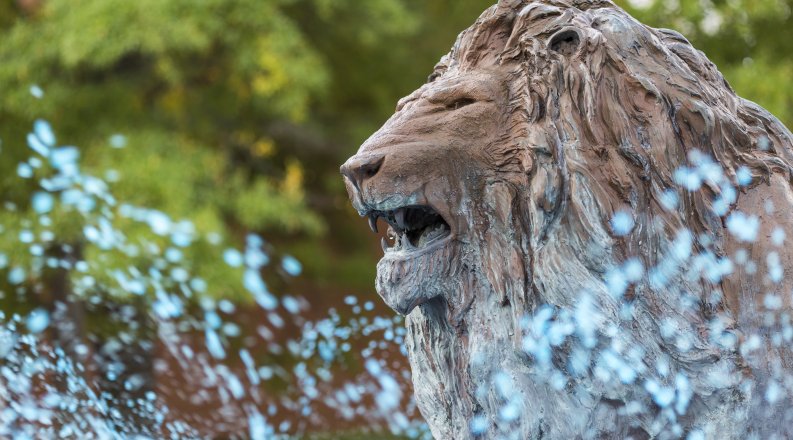By Joe Garvey
An Old Dominion University research team at the Thomas Jefferson National Accelerator Facility (Jefferson Lab) is part of an international collaboration that has taken a major step toward answering a question that has vexed physicists for decades.
The ODU team is led by Lawrence Weinstein, professor and Eminent Scholar of physics at ODU. He wrote an article for the current edition of the scientific journal Nature about the research, which goes a long way toward explaining why the distribution of quarks in the nucleus of an atom differs from that in protons and neutrons. This is known as the European Muon Collaboration (EMC) Effect, named after the group that discovered it.
"That's been an outstanding mystery since '83," he said. "There've been over 1,000 papers written on this."
The article, titled "Modified Structure of Protons and Neutrons in Correlated Pairs," shines a significant spotlight on the work being done by ODU physicists.
"Jefferson Lab has published fewer than 10 papers in Nature and Science since it started in 1994," Weinstein said. "This is our second paper in Nature within 12 months."
The ODU team, working closely with groups from the Massachusetts Institute of Technology and Tel Aviv University as part of the Jefferson Lab CLAS Collaboration (so named because the CLAS12 spectrometer was used in the research), focused on the impacts of proton-neutron pairings.
"What I like to say is protons and neutrons are like people," Weinstein said. "When they're far apart, they ignore each other; when they're at moderate distances, they can attract. But if they get too close, they repel violently. We're looking at these pairs that repel violently, and they're close to each other, and they're moving pretty fast.
"What we did in this paper was we took new data on the EMC Effect - that's how the quarks are distributed in the nuclei compared to the protons and neutrons - and we took new data on the fractions of protons and neutrons that are in these correlated pairs - these short-range pairs - and we asked what happens if this change in the quark distributions is entirely due to these paired-up protons and neutrons?"
Weinstein said the study powerfully suggested that the quark distributions in the paired-up protons and neutrons are significantly distorted. However, there's more work to be done.
"This is a strong indication and a strong enough indication to get us into Nature, but it's not the final proof," he said.
The next step is to directly measure the quark distributions in the pairs. Weinstein said his team is performing an experiment at Jefferson Lab, which is ODU's largest research partner, to measure these distributions. "Then it will probably take about two years to analyze the data and calibrate all of the equipment and understand all the myriad little details and get results," he said.
If this result is confirmed, Weinstein said it can help scientists in two ways: To better understand the structure of neutron stars and how neutrinos react with matter.
The CLAS Collaboration consists of 200 scientists from across the world, including 22 at ODU - six faculty members, three post-doctoral researchers, 12 graduate students and a technician.
"Professor Weinstein and his team have been very clever in finding ways to experimentally probe these short-range correlated pairs of protons and neutrons and the connection with the EMC Effect," said Gail Dodge, a physicist who is dean of the College of Sciences. "It is not easy to study this characteristic of the atomic nucleus, but the ODU group is now well known for their insights into this problem."







